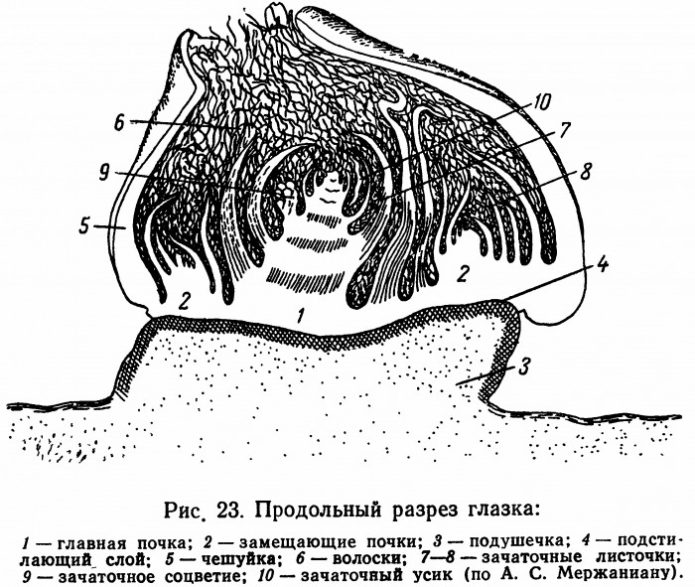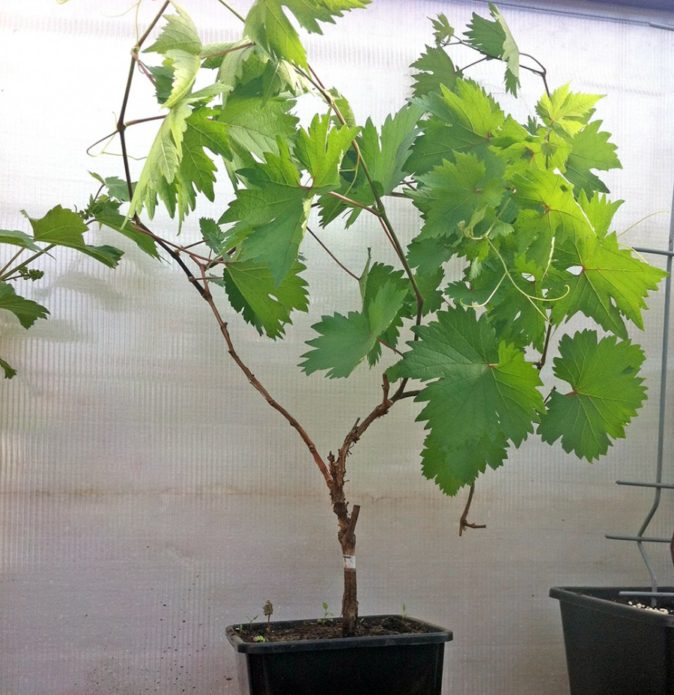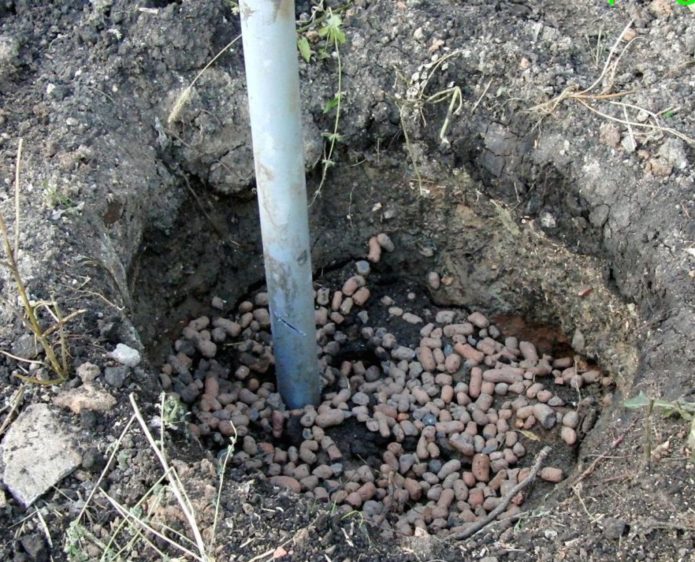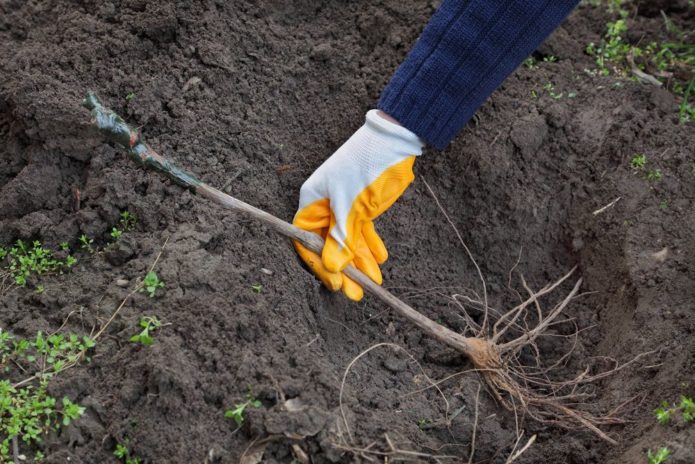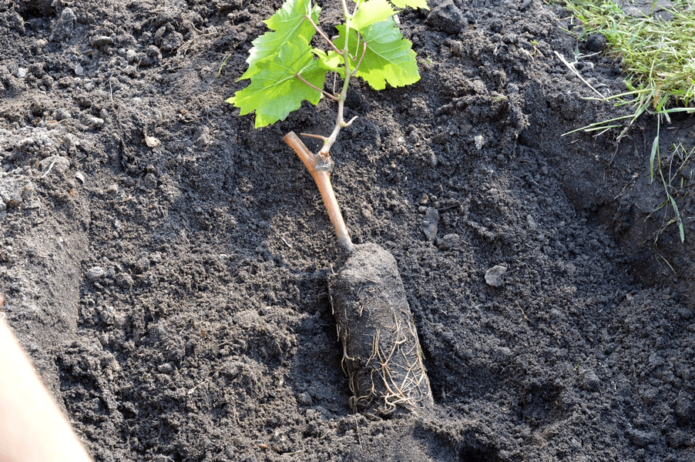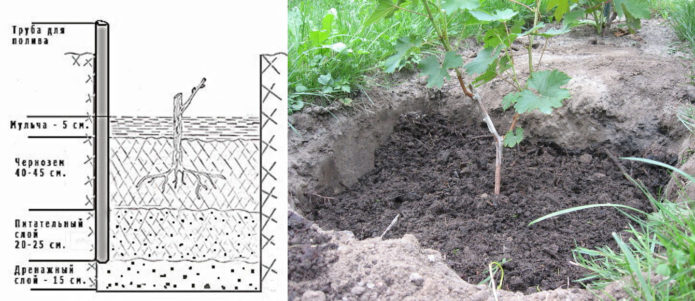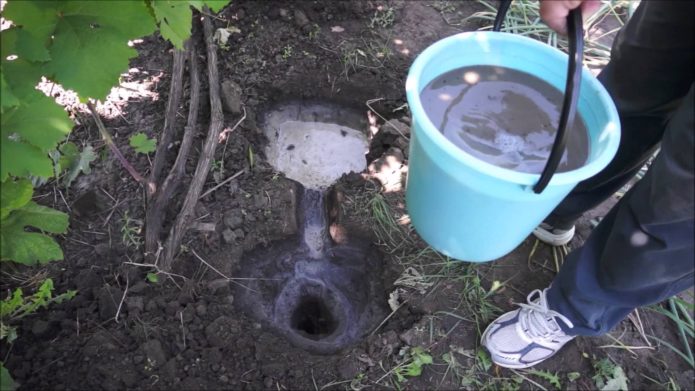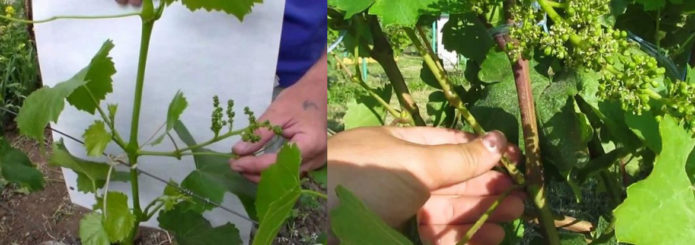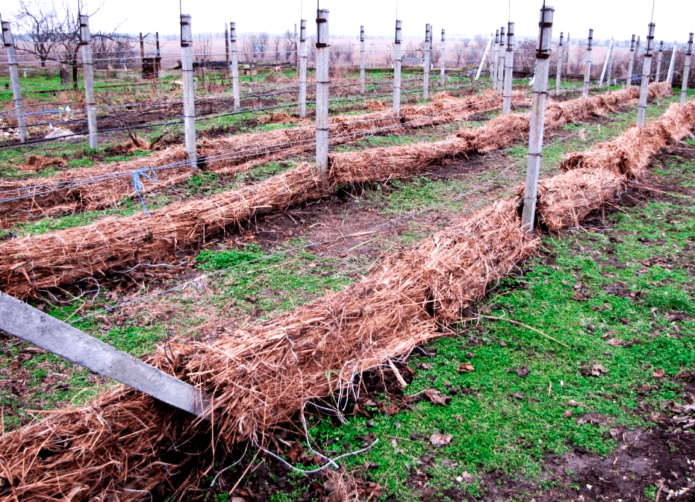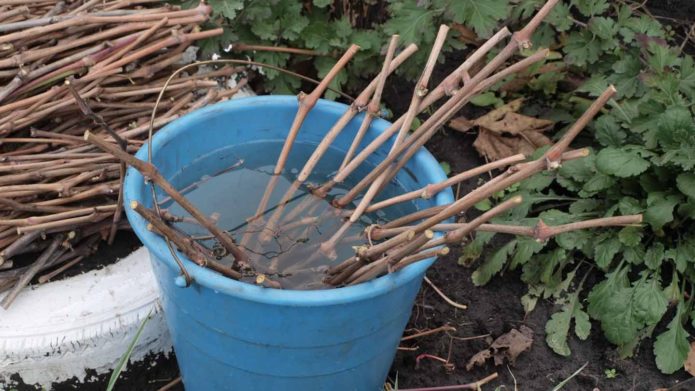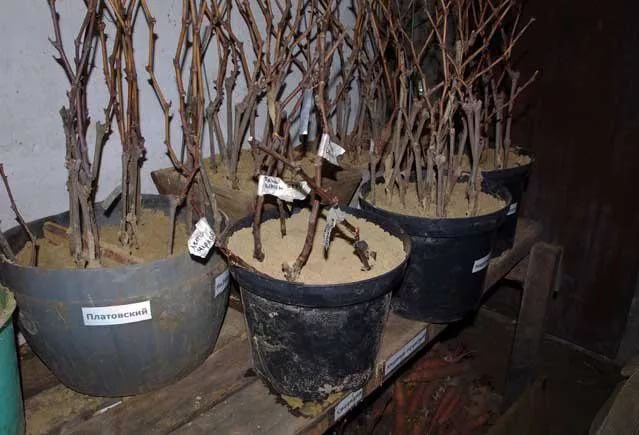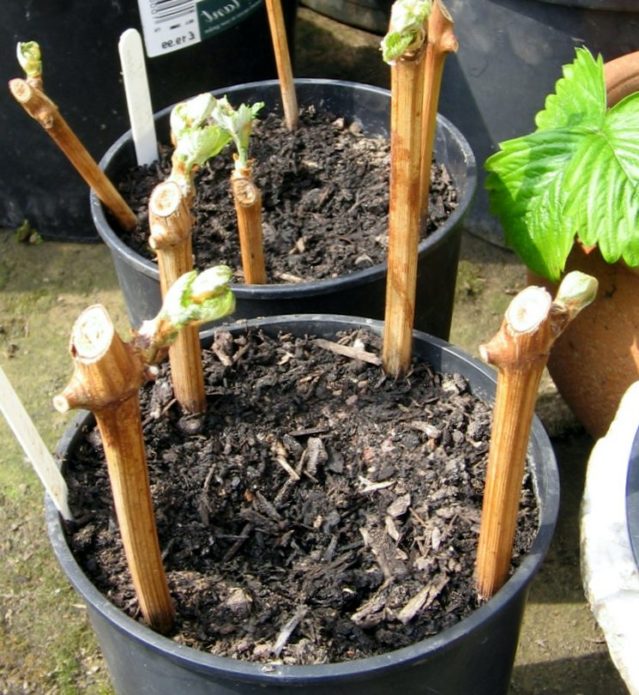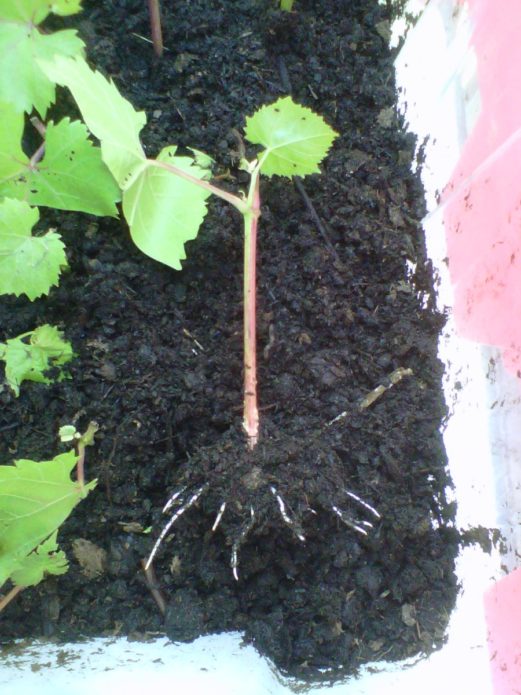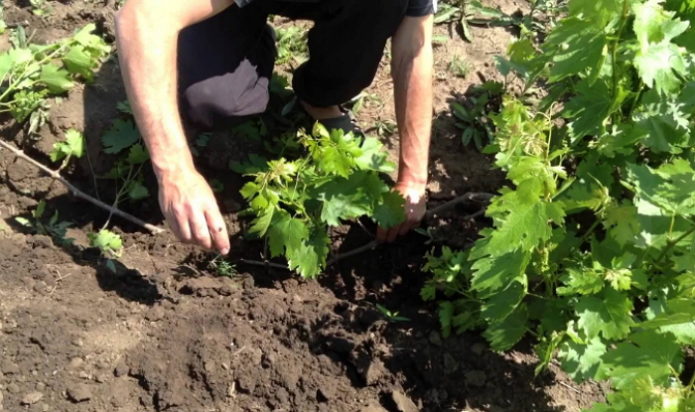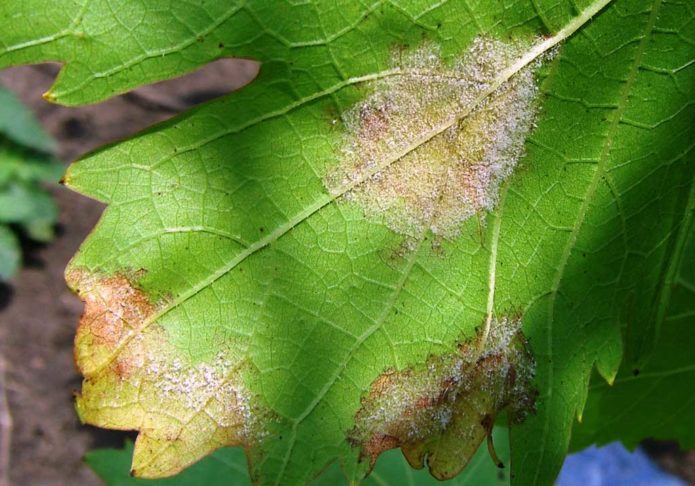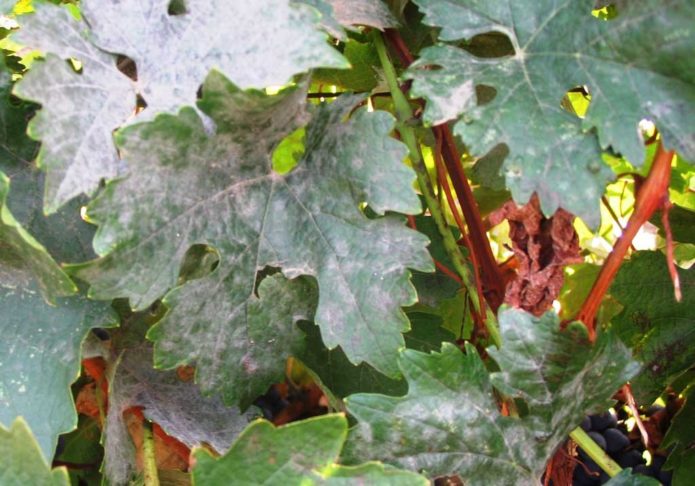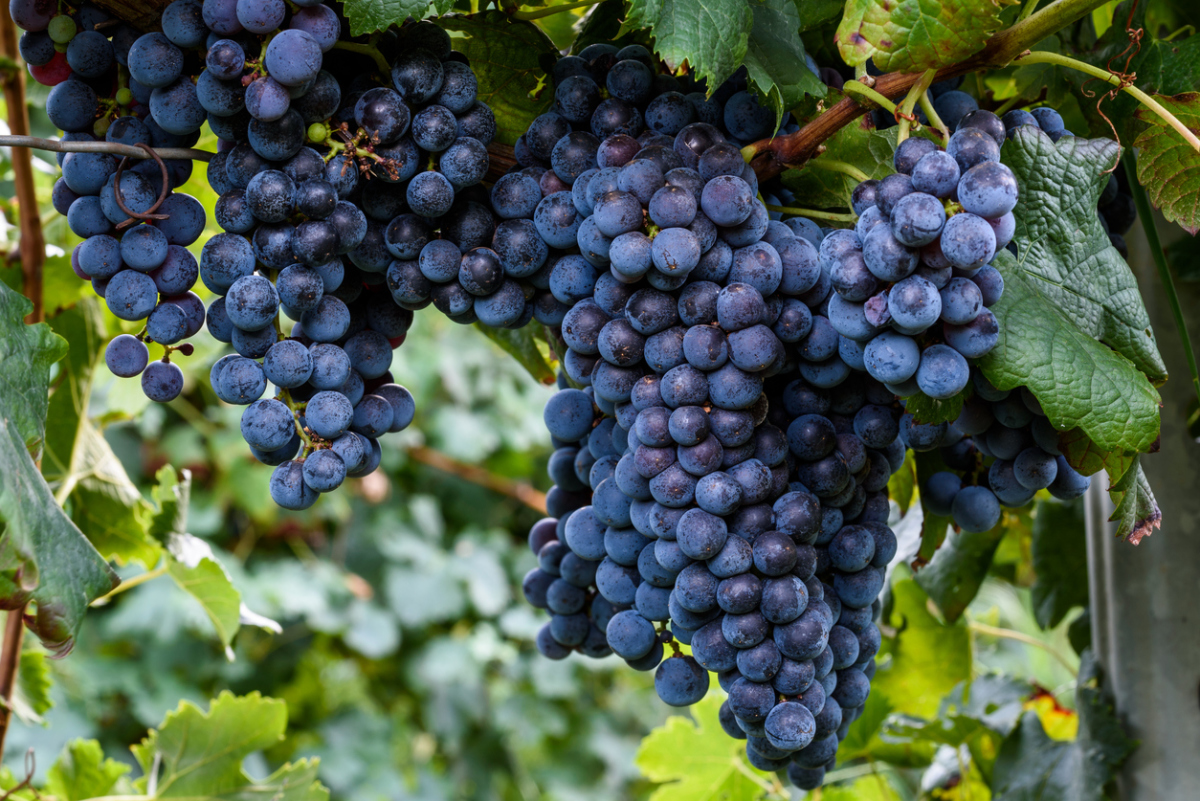Historians argue that the ancient Egyptians feasted on exquisite green grapes more than 60 thousand years ago. e. They considered the white-fruited grapes with a delicate nutmeg aroma ideal for winemaking and making desserts. To obtain a high-quality harvest and for decorative purposes, many gardeners grow the Kishmish 342 dessert grape variety, which is considered ideal in the conditions of a short, unpredictable summer in central Russia. The taste of its seedless fruit delights even the most discerning palates.
Content
The history of breeding varieties Kishmish 342
The hybrid is the result of the work of breeders from Hungary on crossing the European universal technical species Villars Blanc and the early maturing American raisins Perlett Sidlis. Kishmish 342 has other names - GF 342 and Hungarian kishmish. Fresh hybrid berries contain a sufficient amount of organic acids, minerals, vitamins, pectins and phytoncides.
Table white grapes are the result of natural mutation, they tolerate frosts without any problems, they are characterized by early ripening. These qualities influenced the spread of the Kishmish 342 hybrid everywhere. White-fruited and red-fruited varieties of Hungarian selection are found in many parts of our planet, although some gardeners consider them too demanding and not suitable for the cold regions of our country. For many decades, the seedless variety has adapted to various climatic conditions and is successfully cultivated in the Republic of Belarus, in the Urals, in Central Russia.
"Kish mish" in translation from Arabic means "dried grapes" or, in our opinion, raisins, which are prepared from raisins.
Description of grapes Kishmish 342
The early ripening variety has vigorous bushes and ripens in 110–115 days from the moment of ovary formation. You can wait for ripe fruits at different times:
- in the southern regions of Russia - this is the first decade of August;
- in the Central Black Earth Region - mid-August;
- in the Urals and Transbaikalia - late August - early September.
Grape berries are of medium size, less often - large, 15 × 17 mm, weighing up to 2-3 g. Fruits are classified as seedless class 2-3, there are almost no rudiments in the pulp. The experience of gardeners shows: the greater the load on the vine, the less dense rudiments are found in the berries.
Grape shoots ripen two thirds of the length of the vine. It ripens better and the fruitfulness of the shoots rises to 80–85% if they are cut into 7–8 eyes (formations in the leaf axils that unite the buds and ensure their proper development) - this is the so-called medium pruning. The recommended load on grapes is 35–40 eyes.
Plants grow strongly, on branches with a large supply of perennial wood, impressive clusters weighing 500-600 g ripen, the average mass of cylindrical, moderately dense Kishmish 342 grapes is 300-400 g, they are left on one shoot 2-3. Sometimes, with favorable weather conditions and proper care, grape bunches gain weight 1–1.5 kg.
The leaves of the plant are large, rounded, with slight dissection. Flowers are bisexual, collected in dense panicle inflorescences. The pulp of the berries is fleshy-juicy, firm, sweet, with light nutmeg notes. The harmonious taste of berries with a pronounced sweetness is manifested in the fruits of Kishmish 342 grapes, even in an unripe form. The skin of the fruit is delicate and thin, at the moment of ripening the color of the berries is green-golden, fully ripe fruits are light yellow, with time they acquire a pinkish tint, up to a brownish "tan". The sugar content of the hybrid variety is 20%, the acidity is 6–8 g / l.
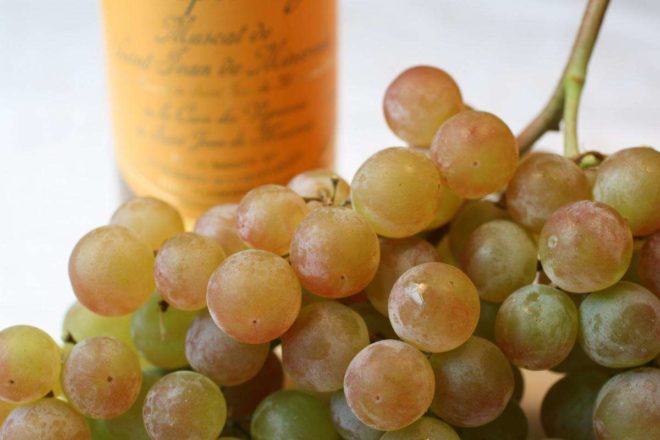
Fully ripe grapes of the Kishmish 342 variety have a light purple hue and are slightly covered with a waxy coating
The very thin skin of grapes Kishmish 342 is easily damaged by sweet-toothed wasps, therefore, to preserve the berries during ripening, mesh bags are put on the bunch.
Table: advantages and disadvantages of grape variety Kishmish 342
| Benefits | disadvantages |
| The possibility of growing on site with severe weather conditions: it does not freeze even at the lowest temperatures (down to –26 ° С); | The need for shelter in the winter season |
| The ability to store for a month despite the average density of the bunch and the thin skin of the fruit | Possibility of manifestation of peas and berries with seeds with improper vine formation |
| Good transport tolerance | The tendency of berries to raisin during long-term storage on a bush |
| Productivity - up to 20 kg per bush | |
| Suitable for baby food | |
| Resistance to fungal diseases (due to the early ripening of berries, almost no mildew is sick) | |
| Good survival rate of seedlings |
It is better to plant grapes on the southwest or west side, covering it with planting of curtain plants:https://flowers.desigusxpro.com/en/yagody/vinograd/kak-posadit-vinograd.html
Kishmish grapes 342 in comparison with similar varieties
In comparison with other related grape varieties, Kishmish 342 differs in the following features:
- does not have specific aromatic notes, as it is felt in the raisin variety Ainset Sidlis with strawberry notes and fruit and berry Glenora;
- the berry is slightly smaller than that of Kishmish Radiant, but much sweeter;
- does not contain seeds, as is the case with Kishmish Cherny, and does not crumble as abundantly as Rusbol;
- ripens a week later than Kishmish Jupiter and similar Nakhodka grapes.
Characteristics of grapes Kishmish 342
The seedless grape variety is steadily gaining sugar and is successfully cultivated in those regions where viticulture is considered risky, and climatic conditions require additional attention in winter and during return frosts in spring. Kishmish 342 is placed in a sunny area with fertile soil. In the first year of life, the plant requires regular watering, loosening and feeding, the obligatory pinching of the shoots three months after planting. The first harvest of berries is harvested in the 2-3rd year.
The hybrid plant is famous for its excellent pollination properties, so the vine is planted alongside other varieties that require pollination for fruiting. Kishmish 342 is characterized by strong vine growth and is prone to overgrowth, so it needs a solid support at least 2-3 m high and a large feeding area. The variety does not tolerate close proximity and needs regular pruning and normalization of shoots.To obtain a classic bunch of Kishmish 342 weighing about 500 g, the vine must be tied up, well ventilated and illuminated from all sides.
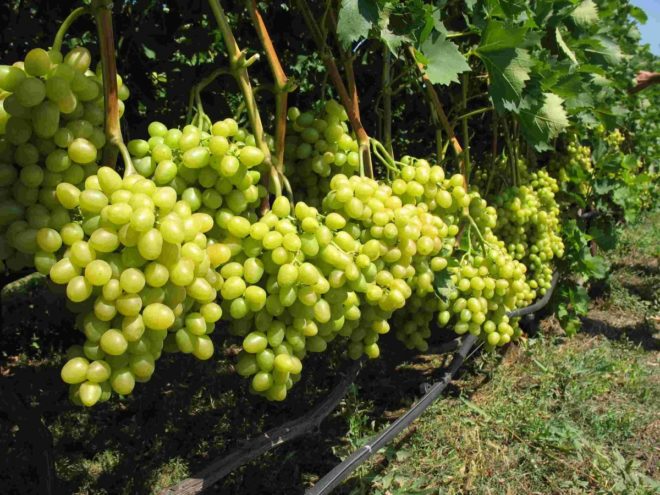
In the absence of excessive thickening of the foliage and the correct design of the trellis, it is possible to grow worthy bunches of an early ripe grape variety Kishmish 342
Often, gardeners keep bunches of Kishmish 342 grapes until the end of September, so that the harvest reaches the maximum sugar content, the berries acquire a delicate pinkish-brown hue, which characterizes the full ripeness of the fruit. Despite the tendency to rash, the berries of the hybrid do not crack or rot in rainy, damp weather. The bunches do not lose their presentation for a long time and hang on the vine for more than a month.
A relatively small berry of bunches of medium density Kishmish 342 is capable of turning into raisins right on the bush in the August heat, just twist the petioles of the bunches a little and remove the dense foliage that shades the fruits.
Video: acquaintance with the hybrid Kishmish 342
Features of planting and growing grapes Kishmish 342
The ideal place for planting vines is a spacious area lined with fruit trees and shrubs around the perimeter. The place is chosen on a gentle south-western or southern slope, fully illuminated in summer and less prone to cold winds in winter. Kishmish 342 bears abundant fruit when it has a reliable support and forms a powerful ramification on a high trunk. Often the vine is planted on the south side of houses, fences and outbuildings, which protect from the winds and allow you to get additional heat from the heated wall surface. The bushes are located at a distance of 1–1.5 m from the support and 3–4 m from each other. High-barreled Kishmish 342 grows better on durable metal or wooden trellises.
The vines begin to tie up after the threat of severe spring frosts has passed, at the beginning of sap flow, but before the buds open:https://flowers.desigusxpro.com/en/yagody/vinograd/kak-podvyazyvat-vinograd-vesnoy.html
Planting grapes
When warm weather sets in in spring, the soil warms up and dries out, and the average daily temperature will be above + 8–10 ° С, they begin planting the variety Kishmish 342 in open ground. In late April - early May, seedlings with an open root system are planted; a closed root system is more common in vegetative young seedlings, they are planted in early summer.
An important point when planting grapes in spring is that the air temperature, ideally, should warm up to + 15 ° C, but it is necessary to make sure that the dormant buds do not start growing and sap flow does not begin.
It is preferable to prepare a plot for planting a vine in the fall: the infertile soil is improved by the introduction of organic matter and humus. Rows of grapes form across the slope from north to southwest or south. The distance between rows of vigorous seedlings Kishmish 342 leaves 2–2.5 m, between bushes - up to 4 m.
An ideal planting material is an annual seedling with more than 3 roots 10 cm long and 2 mm thick. The roots below the last two nodes and damaged ones are pruned to 15–20 cm and immersed for 10 minutes in a solution of any growth stimulant (for example, sodium humate - 2 g per 5 L of water) with the addition of 100 g of hexachlorane for the same amount of liquid.
Planting seedlings Kishmish 342 is as follows:
- They dig a hole 1 × 1 m in size and 90 cm deep.
- A layer of expanded clay, crushed stone or crushed brick (15–20 cm) is poured onto the bottom of the hole, leveled well and tamped. On the south side of the pit, a piece of plastic or iron pipe 1 m long and 5–8 cm in diameter is hammered through which the plant will be watered.
- Superphosphate (0.5 kg), wood ash (0.5 kg) and humus (2-3 buckets) are mixed and poured into the hole (with a layer of about 30 cm).
- On the fertilized, fertile layer, a mound is formed to evenly distribute the roots of the seedling when lowering it into the planting hole, another 2-3 buckets of earth removed from the topsoil are poured on top.
- Moisten the planting pit with two or three buckets of settled water.
- The young vine is lowered into the planting hole at the level of deepening of the "root heel" (the base of the vine) no more than 0.5 m buds to the north, roots to the south. The root processes are gently straightened along the mound. Grapes with a closed root system are planted with a clod of earth so as not to injure the plant.
- The seedling is covered with 15–20 cm soil mixed with sand and turf, without compacting or pressing near the near-root collar, and thoroughly mulched with needles, sawdust, old foliage or straw (5–10 cm).
On a young vine, pruning is done by 2 eyes and temporarily shaded. For the first time, a support peg is installed to the seedling and watered through a pipe - this will avoid the formation of roots at the surface, which are often damaged in winter. During the first summer, the grapes will grow by 1.5–2 m and the vine will grow.
Often frost-resistant grapes Kishmish 342 are planted in autumn. However, at the same time, there is a certain share of the risk of losing the vine during severe frosts, if the plant is insufficiently (incorrectly) covered for the winter or did not manage to take root, get stronger and become full-fledged and highly productive before the onset of stable frosts. Depending on the climatic zone in which the gardener lives and what the weather develops at the beginning and at the end of the growing season, and the timing of planting grapes Kishmish 342 is chosen.
Grape care Kishmish 342
To get the first and subsequent harvests, you need to properly care for the grapes. Care for the Kishmish 342 variety is carried out in several stages:
- the garter of the regrown vines and pruning are performed in May;
- in June, plants are pinched on 2 leaves, shoots are removed and fed;
- in July, pinch the top of young first-year grapes, re-fertilize (phosphorus-potassium) and carry out prophylaxis against fungal diseases and pests;
- early August - the time of fruit ripening, bunches and shoots are tied up, shoots are removed, treated with potash fertilizers;
- in late August or early September, they begin to harvest, watering and feeding are stopped.
Throughout the growing season, once every 2-3 weeks, grapes need to loosen the trunk circle and weed. In the event that the surface at the foot of the vine is mulched, the soil is loosened once a month to improve air flow to the roots.
Watering
Kishmish 342 is a moisture-loving plant, in the absence of full-fledged irrigation, the roots of the plant will grow to 2–2.5 m and go deeper, the vine will wither, the bunch will not gain weight and juiciness. Water the vine every 3 weeks (excluding the season of rains and thunderstorms), pour at least 40-50 liters of water, settled and warmed up (preferably from a barrel), under a one-two-year-old plant. Kishmish 342 requires at least 4 abundant watering during the growing season:
- when budding,
- at the end of flowering,
- when ripe berries,
- before winter as a moisture recharge in order to accumulate moisture in the soil.
The soil in the vineyard is irrigated through a drainage pipe or along the dug furrows (30–40 cm deep at a distance of 40 cm from the central trunk), which, after irrigation, are sprinkled with earth and mulched. Grapes are not recommended to be watered during active flowering and cold water is never used.
Top dressing
It is desirable to apply mineral fertilizers 2 times per summer - June and late July. For Kishmish 342 grapes, top dressing is important, which gives a vigorous plant to grow a strong vine and medium-dense bunches. The feeding procedure is as follows:
- In early spring, as soon as sap flow begins, the bush is spilled with liquid root dressing. Fertilizer is prepared at the rate of 5 g of potassium, 5 g of ammonium nitrate and 50 g of superphosphate per 10 liters of water at room temperature - this amount is calculated per plant. Potassium strengthens the vine, while phosphorus speeds up the flowering process.
- After 2-3 weeks, when the bushes are freed from their winter shelter, grooves 30-40 cm deep are made right in the near-trunk circle and slurry or softened chicken droppings are placed in them at the rate of 1 kg per 1 m2 (the norm for two-year-old vines and older).
- In mid-May, when flowering begins, a second root dressing is carried out, for this use a solution of urea (80 g), potassium sulfate (80 g), phosphorus (30 g), prepared in 25-30 liters of water. The prepared mineral fertilizer is also applied to the root groove (15–20 liters per plant).
- Immediately after flowering, spraying with micronutrient fertilizers containing manganese, zinc, iron and potassium is carried out. In the second half of summer, nitrogen fertilizers are excluded.
Video: feeding grapes Kishmish 342
Trimming and pinching
In the first year, the grapes are not pruned and allowed to form a strong vine for future harvests. In the following years, when pruning, weakened shoots are removed and a bush is formed, leaving up to 8-10 vines on a 1.5-meter plant. To strengthen the root system, catarovka is carried out (removal of root shoots above the ground). As the buds bloom, make sure that two shoots do not grow from one eye, the smaller one is removed, the remaining one as it grows (up to 20-25 cm) is tied to a trellis.
Pruning grapes is done with clean pruning shears, leaving smooth and round cuts on one side of the sleeve (a branch that brings a large number of fruit-bearing vines) to improve the flow of nutrients and minerals. On fruit shoots (young shoots with bunches), the cuts are made oblique so that they do not become numb.
Pinching is a mandatory procedure in which 5 leaves of grapes are left after the second bunch and the tip of the shoot located behind the antennae is cut off. The length of the vine is kept up to 2–2.5 m, so that the fruits can receive enough nutrients and gain sugar content and fructose. Be sure to pinch the excess green shoots and whiskers during all three summer months. These treatments will increase yields and ensure the healthy development of the vine.
Experts advise removing small and weak bunches - the normalization of the bunch affects the yield and taste of Kishmish 342 grapes.
In autumn, grapes are pruned for fruiting and remove fatty (thick) and short internodes (thin) shoots, leaving well-ripened vines of medium length. This regulates the growth of the plant; leaving the most developed, frost-resistant eyes, they form a bush.
Preparation for wintering
In August, as the bunches of Kishmish 342 grow, the shoots are tied up or additional support is placed, the bunches are placed in gauze bags so that pests do not harm the thin-skinned fruits. They try to harvest ripe bunches on time, preventing the grapes from drying out and turning into raisins.
For the winter, the vine is carefully removed from the supports, twisted and loosely pressed to the ground, pinning with a metal wire. From above, the grapes are covered with earth with a layer of 20-30 cm and insulated with straw, spruce branches, needles, if possible - roofing material and non-woven materials (if the region has severe, frosty winters).
Reproduction of grape varieties Kishmish 342
The most famous ways to breed a dessert variety are propagation by cuttings and rooting of daughter shoots:
- the first method involves harvesting cuttings in the fall and planting them in open ground in the spring;
- in the second way, young seedlings of Kishmish 342 grapes are obtained from June to August.
Propagation by cuttings
This method includes the following steps:
- In the fall, woody cuttings are harvested - twigs (40-50 cm), cut at an angle of 45 °.
- They are processed with iron (copper) vitriol and stored in a basement at a temperature of + 5–10 ° C.
- In spring, suitable planting material (with a green cut and whole eyes) is soaked in a manganese solution (1 g per 5 l of water).
- Then the cuttings are placed in water with honey (3 tablespoons per 3 liters of warm water) and covered with polyethylene.
- Shoots are soaked for a day or two and are planted in prepared containers with soil (humus plus sand, expanded clay drainage to the bottom).
- In the process of growth, before planting, the seedlings are watered as the earthen coma dries up, loosened, and the inflorescences that appear are removed. Before planting in the ground, the cuttings are tempered by taking them out into the open air.
Preparing grape cuttings for planting. How to prepare and in what conditions to store:https://flowers.desigusxpro.com/en/yagody/vinograd/cherenki-vinograda-prorashhivanie-vesnoy.html
Reproduction by rooting shoots
Another method of propagating grapes is rooting. To do this, a trench 40 cm deep is prepared next to the mother bush, the lower annual branches are bent into it, leaving the top with a couple of leaves and growth points, and sprinkled with soil. Water it abundantly and cover with spruce branches or straw to maintain soil moisture. Under favorable conditions and regular watering, sprinkled shoots will develop their own roots. This method of propagation of grapes is usually carried out in the spring and summer.
Pest and disease control
Despite the strong immunity of the early maturing variety, timely preventive treatment allows you to preserve the harvest and the vine. In the spring, Kishmish 342 is sprayed with special prophylactic drugs (for example, Topaz or Radomil) or Bordeaux liquid (according to the instructions)... A honey and jam bait sprinkled with boric acid, as well as sugar traps with chlorophos, help with wasps.
The main pests of the plant are the larvae of the May beetle (beetle) and leafworms. The following control measures are used against them:
- treated with insecticides (Fufanon, Fundazol, colloidal sulfur and others) - allows to reduce the damage caused by pests;
- fumigate the vineyard;
- since the larvae of the May beetle live in the near-stem circle, damaging the roots, water the grapes under the root with potassium permanganate (5 g per 10 L of water) or insecticides (Karbofos and Decis according to the instructions). The soil is treated with potent poisonous preparations in early summer, before the harvest ripens.
Control methods are effective in early summer, in August the larvae of the May beetle are buried in the lower layers of the soil, processing will not give an effect.
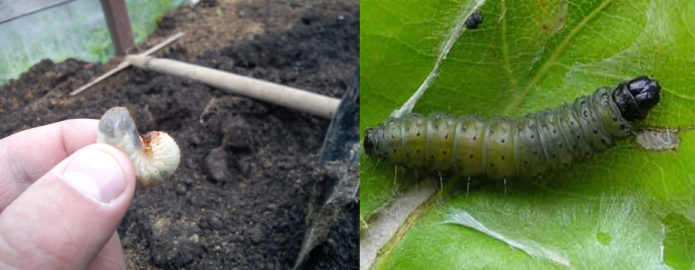
It is necessary to treat the soil under the grapes with insecticides against the larvae of the May beetle at the beginning of summer, and they begin to process the vine from the leafworm even in winter
With thickening of plantings and irregular removal of weeds, Kishmish 342 can be damaged by mildew (downy mildew) and powdery mildew (although this is rare compared to other varieties).
Mildew is recognized by moldy deposits and yellow spots on the leaves. The disease progresses in wet weather.
With oidium, the leaves become covered with a gray coating, and the berries crack and deteriorate, acquiring the smell of rotting fish. This disease can overcome both stalks and shoots in hot, humid weather.
The most effective and efficient way to combat powdery mildew varieties is considered to be spraying the vine with products containing kresoxim-methyl and copper-containing preparations. Processing is carried out twice with an interval of 2 weeks.
As a prophylaxis, before the flowering of the vine, complex preparations Oxyhom and Actellik are used, and after the fruits have set, they are treated with contact-systemic fungicides Acrobat and Thanos. In case of severe damage to grape bushes, gardeners recommend treating with preparations of contact and systemic action of Quadris and Strobi. Fungicides must be alternated so that the fungus does not get used to them. Modern drugs, with timely processing, act effectively on pests, and safely on grapevines.
Reviews
Kishmish 342 came to me by accident, instead of Rusbol, and, perhaps, this is one of the three Hungarian varieties (deleted by Esther, in question Crystal), which I got accustomed to. Last year in our zone I was pleased with a very early ripening period - 90–95 days, fully ripened 5.08, under equal conditions, 5–7 days earlier than Delight and the super-early Elegance. I was not impressed by the taste, but judging by the way the seedlings are taken apart, many people like it.
Kishmish 342 is half a vineyard. The husband likes him very much, and, if given free rein, he would plant the whole vineyard with them. Kishmish 342, pluses: here it ripens the very first, by August 10. There is also tartness, but it does not interfere. The top of the bunches begins to skip even earlier. Resistant to disease. Processing - Quadris, Ridomil Gold and Horus. The entire vineyard, before flowering and two weeks after. From the next. years, Horus decided not to use it anymore. The vine ripens early. Quite resistant to frost and late autumn frosts. This year at Easter we had –7 ° С. Pleven was badly damaged, the Talisman, even the raspberries were frozen. And KM 342 survived. Cons: simple taste, but when it's ripe, so sweet that I wash it down with water. The bunch and berry are too small.I have clusters on average from 300 to 500 g.
Kishmish 342 is a very early ripening variety. I have a ripe 8 August, but pluck from the beginning of August. The bush is vigorous. I cover for the winter (I did not test it for winter hardiness). To mildew it is quite stable, I do 2-3 treatments. Oidium did not see. Berry 2-3 g, round, golden. There are no bones, sometimes there are soft rudiments (II class of seedlessness). Juicy, sweet, thin skin. I put on bags for wasps. The bunch is small. The largest I had was 720 g. But this has a plus - it does not require normalization in bunches. 8 bud trimming in 4 sleeves. The more old wood, the larger the bunches. The bunches hang beautifully on the bush. Sometimes in November, when pruning, I find lost small clusters. Berries are often rained. Suitable for drying.
The early ripe variety Kishmish 342 has taken its rightful place in the vineyards of Russian gardeners and is valued for its nutmeg notes, keeping quality and resistance to most diseases of the vine. Pleasant taste and aroma of seedless berries Kishmish 342, rich in vitamin C and easily digestible glucose, is suitable for making desserts, compotes and wines. The berries are dried, frozen and used in baked goods. Having become acquainted with the peculiarities of growing white-fruited grapes, even a novice gardener will grow a heat-loving vine and will certainly achieve a stable yield.
